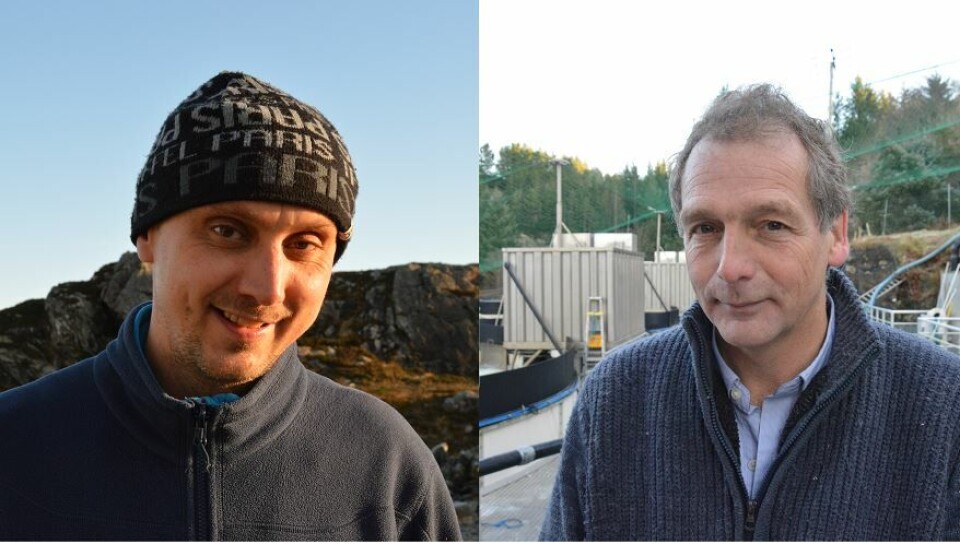
Making a point about modern vaccination
A company that has developed a fully-automatic smolt vaccinator which it says is smaller than other machines on the market is hoping to persuade Scottish salmon farmers to “look to the future” by switching from older vaccination methods.
But one of the hurdles Bergen-based Lumic AS must overcome is the longevity of its older products, some of which have been in use for years.
“We do have the manual and semi-manual units on the market, some of which were produced from around 1989, 1990, 2000 and so forth,” said Einar Hadler Jacobsen, who runs the company alongside managing director Hans Magne Strømme.
“Some of the farmers still have these and they are operating – it’s like an old Volvo, they don’t stop,” he added, laughing.

Less space required
Lumic’s machine vaccinates fish weighing from 35 to 400 grams.
“It’s smaller than other machines on the market and you don’t need that much space to set it up,” said Jacobsen, who explained that the machine could fit into a container to be transported to different sites.
The machine orients the fish and uses optical technology to ensure the correct vaccination and the separating out of fish with defects. Fish are then sorted by size.
Jacobsen said this means salmon farmers don’t have to grade separately during the sea phase. “They can do it when they are vaccinating and when they are delivering the fish. But you can also send the fish to the unit without vaccinating, just to grade them by weight,” he added.
Lower mortality rate
Farmers moving to fully-automatic vaccination would also have a lower smolt mortality rate, claimed Jacobsen.
“What we see is that farmers who have been vaccinating by hand have a higher mortality rate than those who have been vaccinating by machine. There are statistics about that here in Norway that we’ve been looking through.”
He also argues that buying a machine doesn’t necessarily mean more expense. “If you have a vaccinating team of eight to 12 people for maybe two or three weeks, that’s expensive as well,” he said. “It depends on how big the facility is and how many fish are being vaccinated, because these people have to stay somewhere, and the farmer pays for that and for food and for travel, and all this adds up.”
20,000 smolts per hour
The maximum capacity for the Lumic unit is 20,000 smolts per hour, but this can be increased if a company wants a larger machine, Jacobsen said. “The big farmers, they are all welcome. We can adapt this system to whatever amount of fish they have. If they want to vaccinate 60,000 to 80,000 an hour, we can set up the system to do that.”
Austefjorden Smolt AS is the first company to use the new machine and has now ordered a second.
Lumic has given quotes to 10 companies in Norway after they have contacted the firm for tenders and has been using its network of previous customers to publicise its new product. It is hosting demonstration visits in Norway this week and next.
Emailing farmers
“We have sent some emails to some farmers we have contact with regarding the old Lumic units,” said Jacobsen, who expressed his gratitude to Innovation Norway for help in developing the equipment. “We have also some people from Iceland and the Faroe Islands who have the old Lumic machines who we have been talking to and there’s been a lot of interest.
“Also, we know there are a lot of farmers in Scotland using hand vaccination, so we would like to get into the Scottish market. It’ll be 2020 soon and it’s time to look to the future, because it benefits both fish health and productivity. We all see that it’s expensive running a salmon farm and if you can reduce personnel costs it will benefit the farmer.”























































